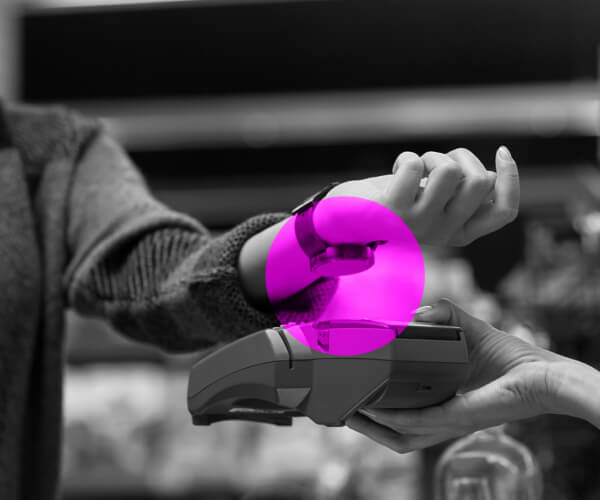This scene might sound familiar to you: this past weekend, I was shopping at Target – a favorite store of mine where I, like many other people I’m sure, often leave with much more in my cart than planned. After restocking some cleaning supplies, I thought I’d try to find a new face moisturizer for this seemingly never-ending Northeast winter.
I got to the beauty aisle and began to assess my options. After a few minutes of deliberating, my eyes started to glaze over and I gave up. Faced with too many options and unsure what the differences were, I decided I would just go online and order from Amazon in the comfort of my own home.
Don’t get me wrong, this is not unique to Target. It is, however, a reflection of the sheer number of choices that shoppers are currently faced with, including the number of brands, products, and the ways in which we shop. In addition to accelerating the growth of e-commerce, the COVID-19 pandemic has also driven popularity of options such as click and collect and same-day delivery. I can now replenish my mascara the same day from Sephora on Instacart instead of trekking 20 minutes to the closest store!
While this reality gives consumers more options, it runs the risk of brands and shopper marketers deprioritizing the store experience. This would be a mistake. Not only is brick-and-mortar still a preferred shopping method for many categories, but with more limited retail space and the role of the store in the omnichannel path-to-purchase changing, the shopper experience needs to work harder than ever. The question really becomes: How do brands deal with a retail environment that is increasingly digital, while ensuring the physical experience still delivers?
As with many questions in life, we can turn to Behavioral Science to begin to address this. Our unique behavioral framework at Behaviorally, one that is simple yet grounded in academic rigor, tells us that human choices are driven by two things: a low barrier to act, and a compelling benefit.
In the case of brick-and-mortar – or truly the entire omnichannel shopping journey – it’s crucial for brands to help their retail partners set up their stores in a way that minimizes barriers for the shopper. Simply put, if a product is too difficult to find, shoppers will consciously or subconsciously deselect it, or it will cause lost time in browsing which otherwise could have been spent discovering new products.
There are many areas brands can influence when looking to decrease barriers to navigation in brick-and-mortar:
- Helping to clarify the segments within or across given categories, thereby increasing awareness and visibility of categories and products
- Setting category adjacencies in a way that is intuitive and aligns with how shoppers make decisions for the particular product occasion
- Providing clear, uncluttered signage or way finders to direct and inform people of their products
- Having the correct SKU assortment and products that fits the consumer needs
Keeping in mind, some degree of disruption is needed. The experience must not make shopping ‘too easy’ or we risk increasing habitual purchase and decreasing browsing and exploration. It is about finding that optimal degree of disruption necessary for your category. This might include:
- Where should innovations be placed?
- How can my displays at the most value? Where will they get the most attention while not interrupting shopping in a negative way?
As retailers are optimizing brick-and-mortar space to account for changing shopper habits, brands should be bringing insights that help retailers evolve in this modern retail landscape – and digital exploration can provide unique opportunities to examine and optimize physical shopper marketing strategies.
Behaviorally’s ShopperFlash™ tool uses virtual, immersive technology that allows us to meet the consumer in a digital simulation of in-context shopping experience to better understand the brick-and-mortar journey. We can mimic the experience a consumer would have across categories of retail environments (mass, grocery, drugstore, convenience, and specialty). ShopperFlash leverages our extensive pack and shelf design database to quickly build virtual shelves into which we can evaluate the impact of variability in Pack, POSM, Planograms, and Pricing. This flexibility helps marketers diagnose a crucial touchpoint in the omnichannel shopper journey and define the shopper marketing efforts that generate the best outcomes to take back to their retailers.
As the omnichannel shopping landscape evolves more rapidly by the moment, brands need fast, actionable insights to refine and execute shopper marketing strategies that truly help them win both online and, still very importantly, at-shelf. Behaviorally’s ShopperFlash tool combines our robust foundation of behavioral science along with a digital-first approach to drive repeat visits, loyalty, and overall shopper growth.
THE AUTHOR
Lauren Davitt is a Vice President at Behaviorally (Formerly PRS), partnering closely with clients to help drive business outcomes. She is passionate about using best-in-class behavioral techniques, the latest thought leadership, and gaining a true understanding of the consumer to enhance the shopper journey and its touchpoints. Connect with her on LinkedIn.
closely with clients to help drive business outcomes. She is passionate about using best-in-class behavioral techniques, the latest thought leadership, and gaining a true understanding of the consumer to enhance the shopper journey and its touchpoints. Connect with her on LinkedIn.
